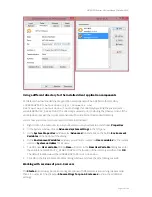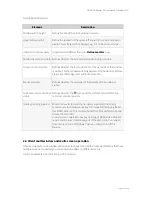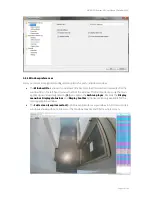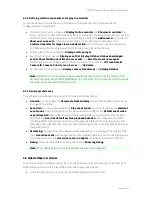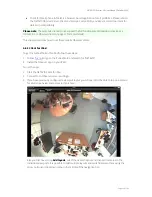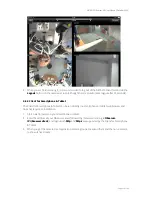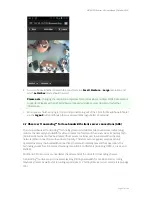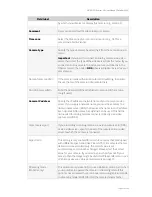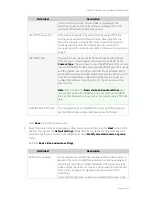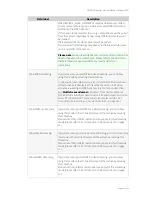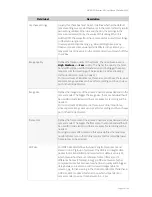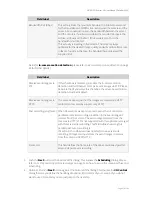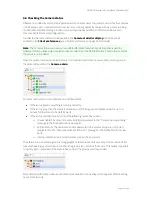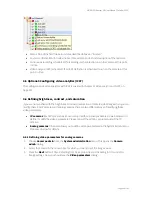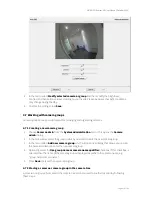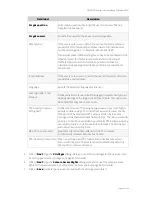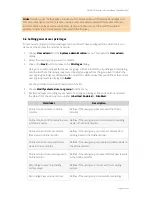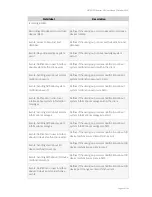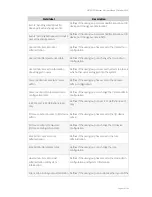
NETAVIS Observer 4.6 User Manual (October 2015)
Page 33 of 204
Field label
Description
frame rates than in single picture mode. If you activate the
streaming mode you also must set the according option in the
camera with the Admin tools of the camera.
Use HTTPS encryption
If the camera supports encrypted streaming using HTTPS this
setting will be enabled. It defines whether streaming from the
camera is encrypted using HTTPS. Please note that encryption
needs significantly more CPU resources on the server than
unencrypted communication (see also
1.3 Observer data security
on
page 7).
JPEG RTSP URL
If you want to use the generic RTSP driver to get a JPEG stream
from a camera - which requires selecting "Generic RTSP" as the
Camera Type
- then you have to enter the RTSP port of the camera
into the first field (if it is left empty then the default port 554 is used)
and the specific URL into the second field. The IP address and (if
applicable) username and password of the camera admin are used
from the corresponding configuration fields above. The stream
configuration (stream resolution, fps, etc.) has to be done in the
camera itself.
Note
: Ensure that on the
Basic video and audio settings
page
(see the next section for details) you only enable the JPEG/MPEG-
4/H.265 checkboxes if you have entered a corresponding RTSP URL
here.
H.264/MPEG-4 RTSP URL The configuration of a H.264/MPEG-4 stream via RTSP works just
like the JPEG stream configuration (see above for details).
Press
Save
to create the new camera.
4.
Select the newly created camera again in the camera tree and then push the
Next
button at the
bottom. This invokes the
Default settings
dialog that lets you define the default image and
audio settings for your camera. To modify values choose
Modify selected camera or group
menu.
Fields for
Basic video and audio settings
:
Field label
Description
Multi stream allowed
Some cameras are capable of providing multiple video streams in
parallel. This can be helpful for example, when online viewing and
recording is to be done in different formats or for optimizing iCAT
video analytics performance (see
1.4 Video streaming methods and
compression
on page 7 for a general discussion about multi
streaming).
Usually MJPEG cameras can deliver several MJPEG streams while

